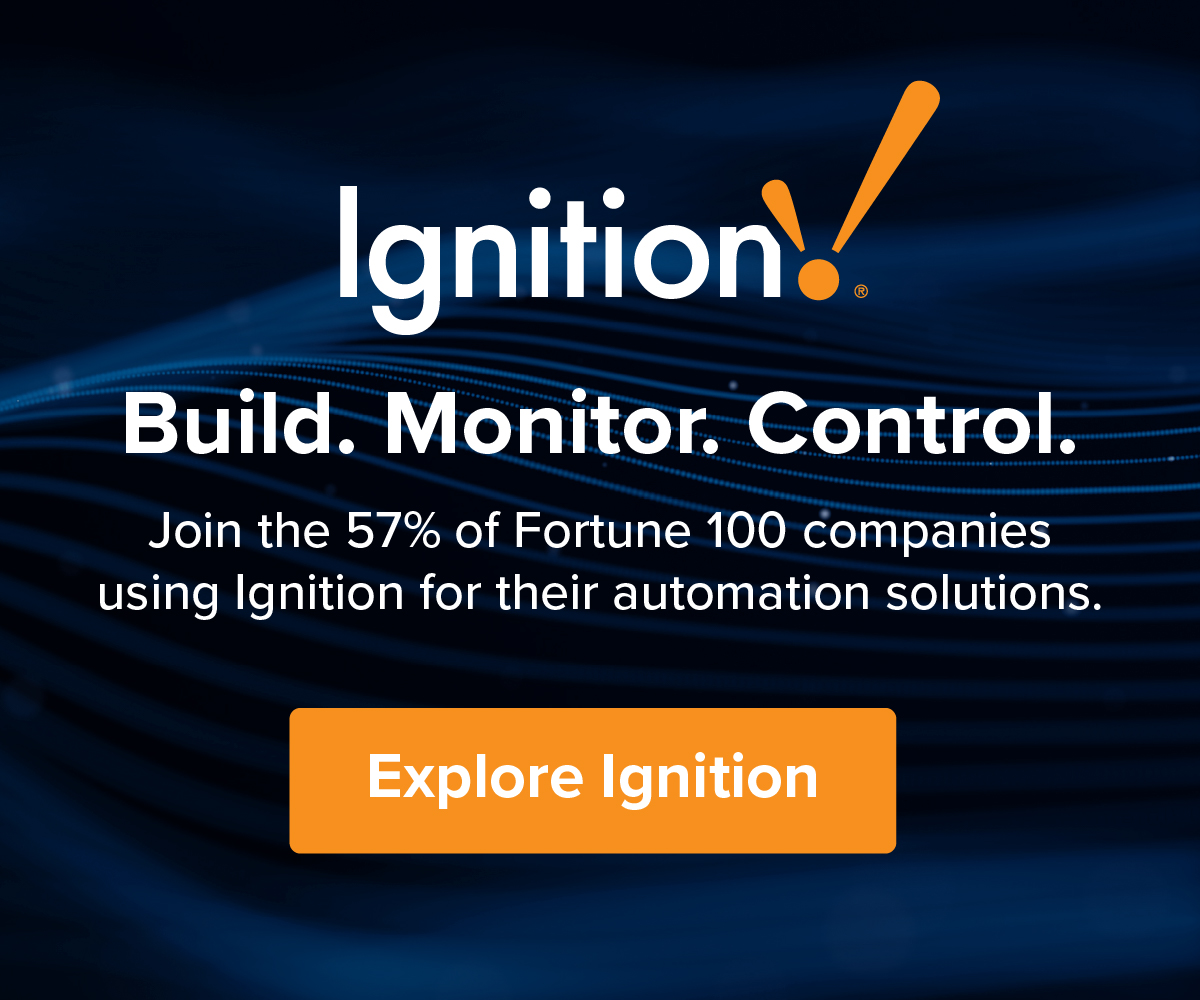by Gary Mintchell | Jul 13, 2023 | Operations Management, Workforce
I’ve recently written about digital threads in the context of moving digital data from one app to another. Last week a new social media application appeared to fill the space Twitter is abandoning called Threads. In the midst of this, here comes a press release about the release of a new app for engineering workflows—Authentise Threadsd. Same name. Common idea (linking data/people). Three different uses.
In a sentence, Unique work thread collaboration empowers R&D and industrial engineering teams to flexibly speed up, track and integrate product development.
Authentise Threads delivers powerful digital thread capabilities, combining communication and project management tools into a radically new work thread collaboration suite. Authentise Threads helps transform R&D and industrial engineering teams into innovation engines with more fluid operations demanded by today’s increasingly distributed environments.
Key features:
- Cross Functional Work Thread Collaboration. Create, search, follow & link shared work threads across engineering teams and partners with real time structured communication, chat & notifications.
- Shared information, knowledge, experience, resources and context. A shared repository of all the key data, resources, goals, metrics needed for work thread execution
- Collaborative Digital Decision Making. Formally track and manage workthread efforts, insights, actions, decisions, resolutions, and more.
- Continuous learning & improvement. Share full history & traceability of work, discussions, issues, decisions, actions, metrics, all with full context.
by Gary Mintchell | Jul 10, 2023 | Automation, Data Management, Embedded Control, Events, Manufacturing IT, Process Control, Sustainability, Technology, Workforce
Honeywell Process Solutions held its annual HUG (Honeywell User Group) conference the week of June 19 in Orlando. I’ve taken some time to compile my many notes and think about the experience.
The marketing communications staff did an excellent job with media and analysts. We did not have time to waste what with presentations and 1:1 conversations.
I had not attended for a few years. For maybe three years I was in the influencer program with Hewlett Packard Enterprise and HPE Discover is the same week. That program was disbanded a year or so ago. That marked the end of my IT affiliations. Those companies figured out there was not a lot of money to be made in manufacturing.
There were many questions begging for answers as I traveled to Florida. What was Honeywell HIVE, and how does it relate to the ExxonMobil initiated Open Process Automation group? What is Honeywell Digital Prime and what customer problems does it address? What successes have Honeywell achieved with sustainability initiatives? Honeywell was an early mobility developer. What has progressed in that regard? What role does Honeywell see for AR and VR?
Pramesh Makeshwari, CEO
He mentioned he’d been CEO of this group for only about nine months. Here are a few points of overview.
- Honeywell is not replacing people with technology but helping them perform better
- People have different learning styles and Honeywell products adapt to them
- Digitalization is a significant customer requirement
- Companies are on the Path to Net Zero Carbon
- Focus on Digital Workforce Competency
Evan Van Hook, Chief Sustainability Officer
He looks at sustainability as similar to the Quality Revolution where the goal was to produce quality outputs consistently creating a culture of quality. His question, “Can we create culture of sustainability?” Honeywell is taking a Lean approach—quality, delivery, inventory, cost, then add sustainability.
Lean is a systematic approach. The company overall has generated more than 6,500 projects over 13 years with ideas coming from the floor and everywhere else. Not a political statement, sustainability cuts costs and adds efficiency. A few milestone points:
- 92% reduction of CO2
- 70% improvement in energy efficiency
- Restored 3,000 acres of land
- Water savings
- 4x industry average safety
Act your way into a new way of thinking—Lean—put sustainability into Lean
Tiffany Barnes – Digital Prime
I perhaps had the most difficulty understanding Digital Prime. This is the Honeywell offering responding to the customer need for digital transformation. So, the conversation with Tiffany Barnes from that group was most instructive. Part of my cognitive dissonance perhaps came from this being a new offering only having one part released.
Digital Prime is most easily described as cloud-hosted digital twin of DCS. Some of the customer pressures Digital Prime addresses include:
- Risk of disruption, production downtime and plant safety
- Pressure to reduce overall lifecycle cost
- Do more with less through digitalization
- Data overload
- Reduced skilled workforce onsite
It is perhaps an irony that Honeywell build a virtual infrastructure to help with system acceptance then deleting it upon that acceptance. Customers began looking at digital transformation programs and realized that all this data Honeywell had was useful. This grew to a digital twin.
Honeywell’s Digital Prime is the up-to-date digital twin for tracking, managing, and testing process control changes and system modifications. It brings the highest level of quality control to the smallest projects: An efficient, compliant, and collaborative solution for managing changes, factory acceptance tests, improved project execution and training.
Providing secure cloud-based connectivity and a virtual engineering platform, it’s a collaborative environment for managing and testing additions, patches, upgrades and other system changes:
- Enabling functional reviews and impact analysis
- Supporting remote FAT tests
- Providing a training tool
- Documenting digital changes.
Joe Bastone — HIVE
Veteran editors and analysts were most curious about any Honeywell response to the initiatives undertaken by The Open Group to solve problems of economically and efficiently upgrading control systems.
This led to my intense interest in Honeywell HIVE and a subsequent conversation with Joe Bastone.
The problem lies with traditionally tightly coupled control hardware, software, and I/O.
Honeywell mostly solved the I/O problem years ago with its configurable I/O. That part of the control system continues to evolve.
The company then worked with a major customer about how to upgrade control software with minimal disruption. First, they worked out how to move the existing control software to a modern hardware platform leaving all the I/O in place. They realized that was in reality a form of virtualization. Moving to a virtualized compute environment effectively decoupling hardware and software was the obvious next step. Their I/O was already virtualized and decoupled.
So, Honeywell HIVE solves that upgrade problem that customers are searching for.
Thanks to Joe for walking me through the technology evolution.
Sarang Gadre — Battery Technology
The well documented issue with intermittent renewables (solar, wind) results from the laws of climate—the wind does not always blow and the sun does not always shine. Honeywell has had a commercial battery storage product for a while. It is housed in shipping containers. Introduced to us at HUG is the Ionic—a scalable, forklift-able, virtual power plant, with an energy control center in Experion. It is battery agnostic—you specify and buy your batteries of choice. The unit also features peak load shaving.
Naved Reza—Carbon Capture
I always enjoy conversations with Naved regarding sustainable technology solutions.
First up was reference to the ExxonMobil Baytown deployment of one of Honeywell’s carbon capture technologies – Honeywell’s CO2 Fractionation and Hydrogen Purification System. This technology is expected to enable ExxonMobil to capture about 7 million tons of carbon dioxide (CO2) per year, the equivalent of the emission of 1.5 million of automobiles for one year.
Then we discussed Honeywell Ecofining—Renewable Fuel projects such as Diesel/Aircraft from biofuels. Also Ethanol to Jet and Methanol to Jet.
Aside from Baytown, there are a number of Carbon Capture (CO2) to blue hydrogen, renewable green, low carbon processing.
Manas Dutta — SafetyWatch Mobility
Performing maintenance on a pump involves an average of 3.5 round trips for the technician. Using augmented reality (AR) platforms can save many hour by providing the right documentation and required tools up front.
I made this trip closely following both the Apple Vision Pro announcement along with all the AI chat hype. So I had to ask Manas for his take from the industrial viewpoint.
“AR/VR are excellent for training especially as individualized based on AI feedback. AR/VR can also be useful for construction. When planning turnarounds, I can answer questions such as can I get a crane in, do I need scaffolding, without a visit remote site.”
by Gary Mintchell | Jun 7, 2023 | Events, News, Technology, Workforce
Welcome to the era of spatial computing, where digital content blends seamlessly with your physical space. So you can do the things you love in ways never before possible. This blurb came from Apple PR’s write up of the new Vision Pro—the long-awaited AR/VR headset.
Apple made no mention of the “M” word. Here is what they called it. “Welcome to the era of spatial computing, where digital content blends seamlessly with your physical space. So you can do the things you love in ways never before possible.”
It is a headset. Even though they say that you used to look at the glass on Apple products and this one you look through the glass—that is not what it is. You actually do not see through the glass like you do with the Microsoft HoloLens. There are many cameras and a couple of them send the outside world to the screens (look like eyeglass lenses) in the headset. This is a typical case of great Apple hardware engineering and design.
Still…
What is problem being solved?
Apple didn’t really answer that. What they did was through out a great piece of hardware, an operating system (VisionOS), and a bunch of ideas. Developers will figure out what problems they’d like to solve with this product.
I’m still thinking, but from an industrial/manufacturing point-of-view I don’t see any new applications. Simulation with digital twin for training. Perhaps remote maintenance and troubleshooting. Simulation along with design in order to see the product being designed and perhaps determine interferences and other gotcha’s at an early stage in design.
I have worn HoloLens as an operator interface device. I doubt that this would ever be a viable alternative.
Some people, such as MG Siegler (see link below) see this as a device to consume media. Much is made of the great display capabilities to replace your computer monitors. But I ask…
Do you want your screen attached to your face?
The promo emphasized collaboration with cool “real” avatars of people in the meeting and ability (?) to see people and presentation. I’m not turned on by that.
They also showed 3D visualization and photography. Is that really useful? Maybe to the dad shooting 3D images of his kids—but I always wonder how much you miss out being present in the moment rather than videoing events. And how often will you actually go back and watch?
Ideas? Send me a note. Right now, will I rush out and spend $3,500 to buy one? I think that if I have that much money laying around to burn, I’ll take a vacation to Europe or South America.
Vision Pro links.
M.G. Siegler, 500ish Blog—Apple’s history, Compute, Collaborate (iPhone, iPad), Consume (Vision Pro)
Another Podcast, Benedict Evans and Toni Cowan-Brown.
Accidental Tech Podcast, John Siracusa, Marco Arment, Casey Liss.
And, most thoroughly, a long report of personal experience with the Vision Pro from John Gruber at Daring Fireball.
Other thoughts on the “metaverse” in general I’ve posted over the past year:
My podcast.
Metaverse Solutions, interview with GridRaster
Open Metaverse Foundation
Initial Thoughts on Industrial Metaverse
by Gary Mintchell | Jun 5, 2023 | Leadership, Personal Development, Workforce
Trust seems to be a commodity in short supply these days—if we are to believe all the media we might be consuming. My personality type tends to trust most people upon first meeting allowing them time to prove themselves either worthy of trust or someone to avoid. Many people default to distrust allowing another to perhaps overcome the distrust—if ever they can.
Building trust becomes essential to both building a brand and building a team.
Therefore, this article I saw in the MIT Sloan Management Review struck me as relevant.
A lack of trust between colleagues and managers in remote and hybrid environments can damage workplace culture and morale.
It was inevitable that the rise in working from home would create tensions inside many organizations. But it didn’t have to be quite this bad. According to a new survey by Envoy, less than a quarter (24%) of employees trust their colleagues to get work done remotely.
Twenty years ago, I told my manager I was going to do more work from home. I was a writer. The cubicle life at the company detracted from the ability to concentrate on writing. I churned out more articles and news from home. In fact, no one on the staff turned out more work. But the boss, worried about control, said, “As long as you get your work done.”
Research shows that distrust damages workplaces, whereas high levels of trust fuel engagement and motivation while reducing absenteeism.
Four points:
- Assess Employees’ Individual Environments
- Simulate Natural Interactions — Lots of Them
- Be Transparent About Monitoring
- Train Team Members in Getting to the Truth
ABOUT THE AUTHOR
Pamela Meyer is the author of Liespotting: Proven Techniques to Detect Deception (St. Martin’s Press, 2010) and the CEO of Calibriate, a deception detection and inside threat mitigation consulting firm. Her 2011 presentation “How to Spot a Liar” is one of the 20 most popular TED Talks of all time.
Bullet number two should be stimulate natural interactions. Good people management both of local and remote teams benefits from such an environment. Don’t let people burrow into lonely caves. Especially if you are managing nerds.
Transparency is always a key to good leadership. Let people know what you are doing, where you are going, and how they stand with you.
by Gary Mintchell | May 19, 2023 | Workforce
What workforce problem has populated every industrial trade press issue for the past 10-15 years? Baby Boomers are retiring taking decades of knowledge with them. How can the new workforce of engineers and technicians be provided the skillset quickly?
Actually, new people have come into the industry continually for years. Recall the conferences you’ve attended (except during the pandemic) over the past several years. The demographic has been trending younger and diverse.
However, the search for better ways to train new workers is, and will be, never ending. We’ve traveled the simulation path. Better virtual reality technology may improve that experience.
Another solution comes from a new company formed in Detroit with former Siemens executives. (The press release says, “with a vision to use AI to accelerate skills training for shop-floor and other highly technical skilled trades workers.”) DeepHow utilize generative AI to enable teams to capture their know-how using a smartphone, turning expertise into step-by-step how-to videos that can be translated into multiple languages in a matter of minutes, to create a unique and extremely valuable library of organizational knowledge that can be effectively transferred to every worker.
This looks like one of many cool uses of technology that may not translate as well into practical everyday use as might be desired. But…it may, if it is easy to use, find widespread usage among industrial engineers.
The recent news concerns funding of the startup. DeepHow has closed $14M in Series A funding. Owl Ventures, a specialist in education technology investing, led the round, with participation from another new investor: LG Technology Ventures. Existing investors Sierra Ventures, Qualcomm Ventures, Osage Venture Partners, and Foothill Ventures also participated in this round.
DeepHow plans to invest in go-to-market initiatives to accelerate its business growth, and to ramp up its investments in product, engineering, and generative AI innovation. In response to customer demand, DeepHow has already fast-tracked development of powerful product enhancements that leverage the power of generative AI to accelerate SOP video creation, multimodal workflow generation, AI chat assistance, and strategic knowledge mapping.
by Gary Mintchell | Mar 31, 2023 | Operations Management, Productivity, Workforce
I had an opportunity to speak with Ken Fisher, SVP of Product Management & Solutions Consulting at QAD Redzone, about ways the US can maintain continued manufacturing through the use of technology.
Redzone is a leading workforce collaboration and connectivity solution company acquired by enterprise and MES software company QAD. Fisher told me that MES is primarily a management tool. The Redzone solution focuses on front-line workers, although supervisors and managers also benefit from the collaboration tools.
They use OEE as one measure of effectiveness because it’s an easy way to benchmark, a good way to compare. However, Redzone acknowledges that OEE can also be easily gamed by operators and others, so they apply filters to try to standardize data as much as possible. Evaluating success does not stop with OEE. They also go to the controller to check on P&L numbers such as overtime hours worked.
A plant implementing a new MES may see a productivity improvement by as much as 2%, while a typical Redzone implementation results in about a 29% improvement.
The solution is essentially an app that runs on tablets but is also accessible by smart phone. It’s intuitive to use applying familiar tablet technologies. But the solution is not just an app on an iPad. Redzone’s application also includes coaching on how to best use the tools.
A few features:
- Reduces administrative load on operators’ data entry
- Gives a voice to the operator using various chat and communication tools
- Employee engagement enhanced
- Works within a Lean culture
- Includes a skills matrix to find the right person to fill a slot in an emergency
- Allows personnel to pinpoint and deal with anomalies during the day
The impetus of the conversation was a recently completed survey of more than 1,000 plants reporting back on millions of production runs.
These new data from QAD Redzone found that 700 factories raised their overall equipment effectiveness (OEE) by an average of 21 points after just one year of using these types of tools. Additionally, a variety of less-tangible benefits were noted, including enhanced communication and collaboration, greater worker engagement and retention, lower absenteeism, enhanced operational flexibility and agility, and more.
Based on actual anonymized production data directly from the plant and equipment, the productivity benchmark report is the largest and most comprehensive study of plant productivity of its kind. The study includes:
- Starting plant performance (OEE) benchmarks by industry
- Resulting OEE uplift and productivity improvement
- How results vary by continuous improvement (CI) maturity
- How results vary by starting point
- Estimated annual savings by plant size
Based on on-site assessments, our Engagement Study explores how 50 plants authentically transformed their levels of frontline engagement by tapping into the laws of human nature.
These plants increased productivity and reduced staff turnover by focusing on these five areas of engagement:
- Connecting teams and individuals
- Ownership of performance
- Autonomous problem solving
- Enabling cross team collaboration
- Feeling competent and recognized





